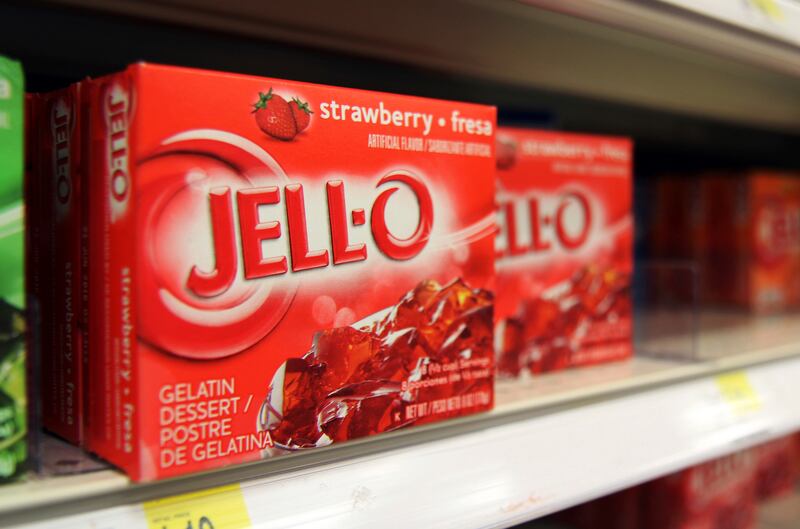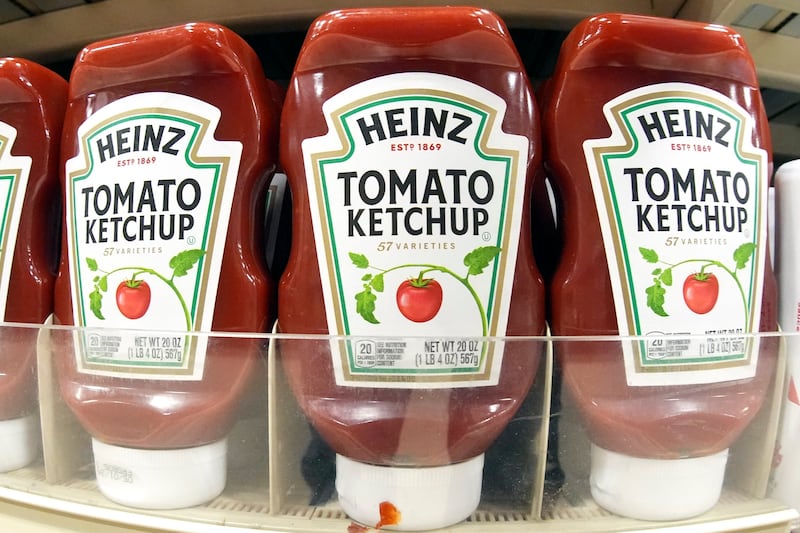- Kraft Heinz will not use artificial coloring in new U.S. products.
- The company is replacing artificial colors with natural alternatives and substituting essential hues with new ones.
- Brands include a range of condiment and beverage names such as Jell-O, Kool-Aid and Oscar Mayer.
Condiment giant Kraft Heinz said it won’t add artificial coloring to any new product it launches in the U.S., starting now. And in compliance with plans by U.S. Health and Human Services Secretary Robert F. Kennedy, Jr., the company hopes to get rid of all artificial dyes in U.S.-sold products before 2028.
The announcement was made Tuesday morning in a news release that said nearly 90% of the company’s products in the U.S. are already free of artificial colors, which are called “Food, Drug & Cosmetic” colors by the U.S. Food and Drug Administration.
For the products that do contain artificial coloring, the company said it has “invested significant resources, mobilizing a team to address this complex challenge with a three-pronged approach”:
- Kraft Heinz is removing colors “not critical to the consumer experience.”
- It’s replacing artificial colors with natural colors.
- For its third alternative, the company is “reinventing new colors and shades where matching natural colors are not available.”
Kraft Heinz brands include Jell-O, Philadelphia Cream Cheese, Capri Sun, Kool-Aid, Grey Poupon, Honig, Oscar Mayer, Classico, Lunchables and Quero, among others.

Pedro Navio, North America president of Kraft Heinz, said in the release that the company is more than 150 years old and its product line and recipes are always “evolving.” He noted they took the artificial colors, preservatives and flavors out of their Kraft Mac & Cheese in 2016.
“Our iconic Heinz Tomato Ketchup has never had artificial dyes — the red color comes simply from the world’s best tomatoes," he said.
The company also emphasized how much of its product line comes from U.S. sources. “Today, Kraft Heinz sources the most tomatoes in the U.S., all grown in California for products like Heinz Tomato Ketchup. Claussen pickles (cucumbers) are grown in Ohio and Michigan; Ore-Ida potatoes are grown in Idaho; the dairy for Philadelphia cream cheese comes from farms in Upstate New York,” per the release.
Returning products to natural colors
Other companies are also eliminating artificial dyes. Reuters reported those include W.K. Kellogg and Tyson Foods, which “have been working on reformulating existing products and introducing new items without artificial dyes.”
The article added that Walmart-owned Sam’s Club announced earlier this month that it was getting rid of 40 ingredients, “including artificial colors and aspartame,” from its Member’s Mark brands by the end of 2025.
States are also taking steps. California, West Virginia and Virginia have said no to artificial dyes in food. And the Environmental Working Group has reported that dozens of other states are looking at banning artificial coloring and different additives, as well.
RFK Jr.’s plan to ban ‘rainbow of risk’
Deseret News reported in April that Kennedy was going to ban eight petroleum-based artificial food dyes from use in the American food supply. He said they would be eliminated within the next two years. The announcement, made by video, told food manufacturers to choose natural alternatives.
In the video, Kennedy said wryly that if people want to consume petroleum, “they should add it themselves at home.”
Per Deseret News, “Kennedy is focusing on the other eight artificial food dyes, which the Center for Science in the Public Interest calls ‘a rainbow of risks.’ Those eight are Blue No. 1 and Blue No. 2, Citrus Red No. 2, Green No. 3, Orange B, Red No. 40, Yellow No. 5 and Yellow No. 6."
The FDA had already said to stop using red dye No. 3. Authorization for Citrus Red No. 2 and Orange B are soon to be revoked, which will also happen to the remaining six petroleum-based dyes by year’s end.
The driving force behind the ban has been health risk, with some research linking several of the dyes to possible tumor development and neurotoxicity in animal studies. There have been reported worries that had potential risk for attention deficit hyperactivity disorder, as Deseret News reported. There are also concerns the dyes could increase the risk of certain cancers.
Food manufacturers have said there’s not strong evidence of health risks, but Kennedy’s team has countered that any risk isn’t worth it. And other countries are also taking steps.
Per The New York Times, Froot Loops in Canada are colored by blueberries and carrots, while the U.S. version is colored by Red No. 40, Yellow No. 5 and Blue No. 1. Many artificial dyes in food are banned in the European Union.
CNN reported that Kraft Heinz’s action “may push rivals to speed up efforts to phase out artificial coloring.”



